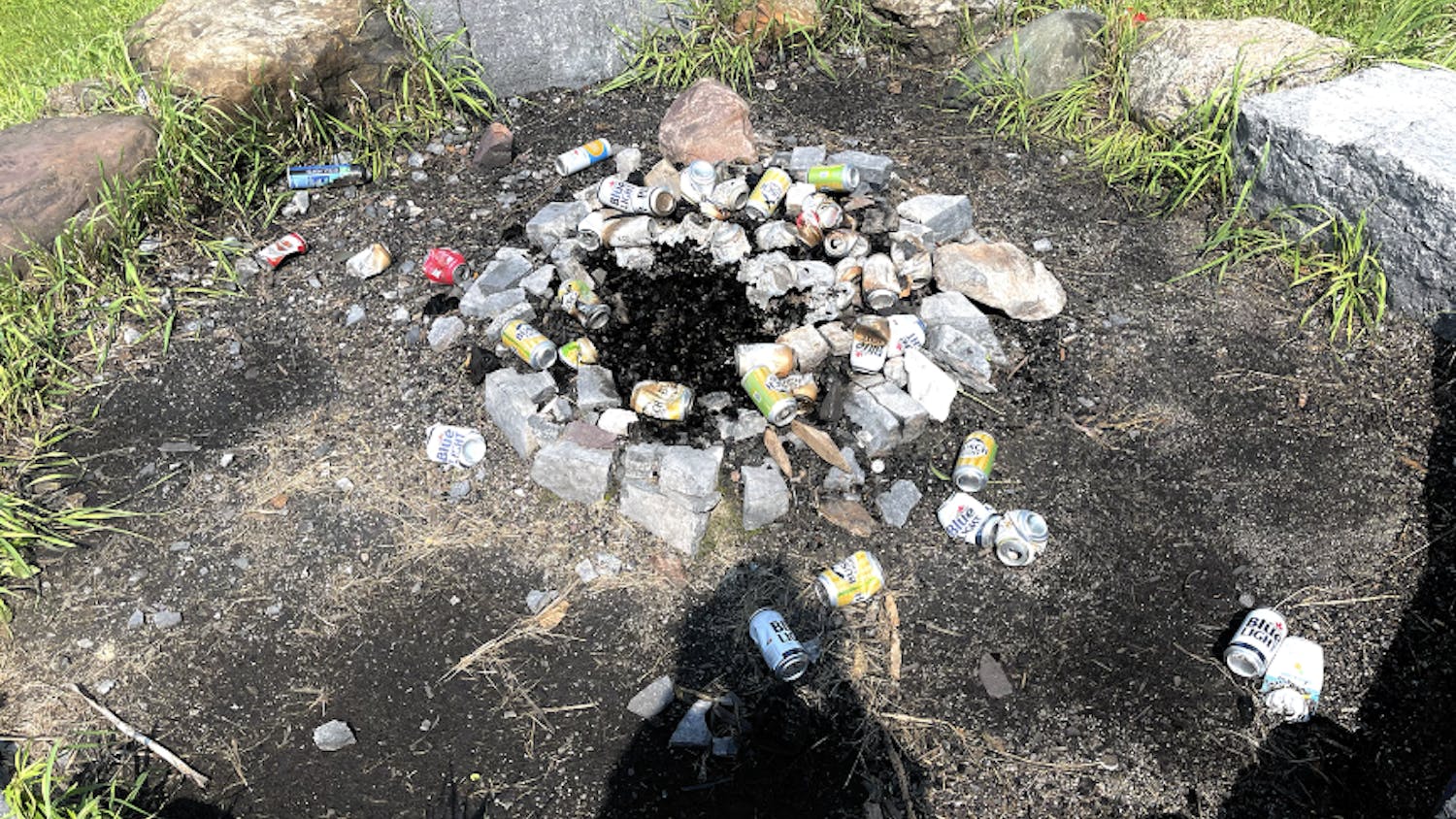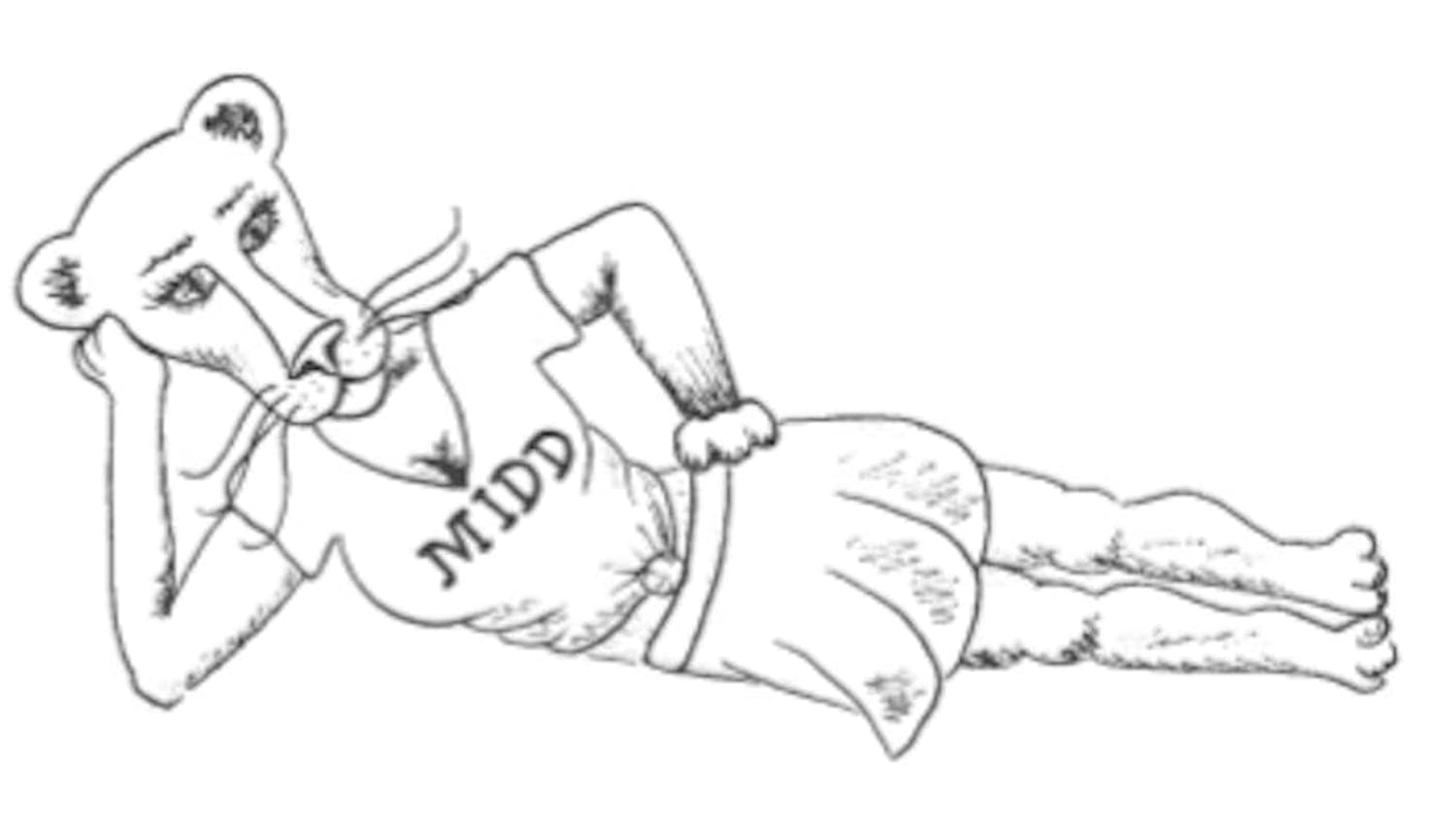In a recent lecture on the connection between mind and body, Andrea Olsen said that after three days of drinking water at a conference in Korea she was 60 percent composed of that country. My encounters with the Proctor water tap have provided less inspiration.
That’s not to say this place is lacking in connection. During a recent head massage a friend explained to me how tired our necks have become, bearing all the weight of an institution that rushes 20-some years of devotion up narrow neural cords to a tiny and exotic location in the brain. We have arrived at Middlebury mostly by elevating our brains above many other things, neck only the least hurdle to that cultural grail of cap and gown, which seem to legitimize such endeavors. No wonder every make out session leads to a frenzied suction at the neck; the hickey has become the body’s rebellion to the head.
At Middlebury, even the most shame-filled one-night-stand seems to offer the purest moment of reclamation: the one instant when (however transitory) the mind takes backseat to physical pleasure. The day belongs to the mind, but for two weekend nights there exists some sanction to pound out any pleasure possible to salvage. And if there is shame in the morning, it’s because the hangover we attribute so easily to alcohol comes from the frenzy in which we’re forced to feed the night before. Friends have told me they can no longer drink here, and I’m sure there are some who never drink at all. But the problem can’t be pegged on keg stands nor one-night-stands. The problem is apparent when the claim of sitting 24-hours in the library elicits only a shrug.
Even at the identification of a problem, we constantly employ the wrong means by which it can be solved. This year there has been much public advocacy for arts in education, and the only significant criticism seems to condemn the methods by which we solicit support. In an attempt to attract funding, activists frame the benefits of the arts in their statistical improvement of academics. But positively or negatively, standardized exams fail to convey how creative writing deters a kid from joining a gang. No statistic can represent the power of painting to prevent suicide.
At Olsen’s lecture a student asked: though the artist constantly pursues ways to contribute to the community, how can the community contribute to the artist? Olsen attempted to answer, but ended by asking the student: What are you interested in? What do you want to do? Our “problems” are being vocalized in campus symposiums, in seminars, over dinner. This campus needs to be more diverse, more dynamic, more creative. But in the paralysis of comprehending what can actually be done about it, we retreat once more to the mind: let’s talk, let’s read statistics, let’s compare books. Dialogue is important, but when we feel despair at the failure of it to produce results, we wait until Saturday to get wasted and beg some stranger to feel our bodies just hard enough so we can remember we exist.
Then there are moments in the depths of monotony when we are inspired to random action. Sewer signs are plastered with paper proclaiming: “Ninja Turtles Now Hiring, Inquire Within.” A student leads 20 friends on an adventure walk down the TAM. A Bon-Fire ignites on the Golf Course. These aren’t merely moments of the bizarre to attract attention; they are glimpses of random, irrational release. In physics there is an idea that the phenomenon of Chaos is really just another sense of order we perceive as random. Perhaps there is purpose in momentary acts of randomness on this campus.
Maybe in addition to structured on-campus cultural events, there is a need for more moderate, self-sustaining outlets of enrichment. There is a need for sledding, for guerilla art installations, for policies that encourage dorm-room soirées that don’t get shut down at midnight (launching 15 inebriated freshman down a snow drift as they wander toward an obscure off-campus party). Perhaps Megan Nesbeth was right in her February 24 op-ed “Race to Where?” that academic culture could be improved by the reintroduction of reading periods and more experimental Winter Term classes.
Maybe we need professors who rely less on Power-points. Maybe we need friends who rely less on a 24-pack of PBR for Saturday and entertain the alternative of a 12-pack of Otter Creek sipped over the week, enjoyed while liberating the intellectual conversation from its confines of the isolated classroom. Maybe we need fewer exams so we have time to eat a healthy meal in the dining hall (no longer shamed by a porcelain-trail of theft). Maybe we need a lighter course-load so rather than ditching discussion to study for another class, each tick of the attendance is exemplary of a desire to learn in itself (without any disciplinary incentive at all).
Maybe not. But there are other acts, little by little, that can gradually restore the break between mind and body. There are ways, however moderate and seemingly random, that enrich a community.
My favorite class here wasn’t the first time I blew my mind. My favorite weekend doesn’t involve a wild orgy. My favorite moments are when simple concepts and experiences wind themselves together to gradually undo my previous assumptions, peck away at my malaise, and make me understand again the sublimity in existing at all.
A letter on creativity
Comments



